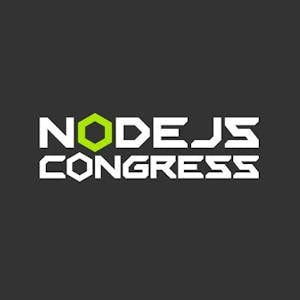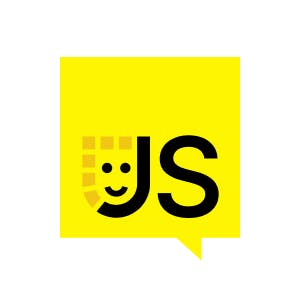Y eso es algo que Remix y ahora construido para realmente como incluso acoplar el lado del cliente y el lado del backend más estrechamente juntos. Así que con Turbostream, que es HTTP en streaming, ahora puedes pasar promesas y evadir las promesas o diferir las promesas en el cliente y mostrar un suspense, algún tipo de cargador mientras todavía se está obteniendo en el servidor, ¿verdad? Puedes ver cómo Remix y también Next.js, en ese sentido, los componentes de React.js, realmente dan un paso más allá en la construcción de transportes y protocolos sobre React para realmente acoplar estrechamente el frontend y el backend, ¿verdad? Así que como los frameworks full stack se están volviendo incluso más adaptados de esa manera. Mencioné React Server Components, ¿verdad? React Server Components es su propio protocolo que tiene sus propias cargas útiles que está enviando al cliente que tampoco es solo JSON regular, sino algo que React en el cliente entiende para entender cómo manejar diferentes casos de uso cuando se trata de React Server Components. Y aquí tengo que mencionar BFF. BFF obviamente es un patrón muy antiguo que no tiene nada que ver con React Server Components o Remix, pero es un patrón donde dices que un frontend debería tener un servidor dedicado que tome todas sus solicitudes y las maneje de una manera muy específica para ese frontend y abstrae todo el otro backend y bases de datos downstream, microservicios, y cualquier locura que haya dentro de tu corporación y empresa. Así que el patrón BFF proviene de este panorama de microservicios, pero definitivamente podemos decir que Next.js y Remix están implementando el patrón BFF, ¿verdad? Así que si estás desplegando una aplicación Next.js, es una aplicación full stack que sirve a un cliente, y luego para ese cliente, el backend de Next.js está implementando o es un backend específico para el frontend de Next.js. Eso lo convierte en el mejor amigo del frontend. Genial. Así que todo esto es, supongo, lo básico. Quiero decir, React Server Components todavía es muy nuevo y todos estamos tratando de entenderlo. Y obviamente, Remix, también conocido como React Router y Next.js todavía están cambiando, ¿verdad? Así que como TurboStream es un cambio bastante nuevo en Remix. Era JSON antes, pero aún creo que la mayoría de la gente ha aceptado que la DX, o frameworks web full stack, es increíble, y es una forma realmente genial de lanzar rápido cuando quieres construir para la web. Pero eso también es solo donde las cosas comienzan, ¿verdad? Como incluso si tienes un gran framework web full stack ya en producción, digamos que tengo un nuevo proyecto paralelo, estoy comenzando con Remix, ¿verdad? Entonces mucha de la aventura todavía solo comienza, ¿verdad? Todavía tenemos que pensar en los requisitos de nuestra aplicación, lo que realmente queremos jugar, ¿queremos tener soporte offline, características multijugador, verdad? ¿Debería sentirse nativo? Hay muchas expectativas para las aplicaciones en 2025, ¿verdad? Así que nuestro trabajo no está terminado. Si acaso, solo está comenzando. Y este es el estado en el que estaba con mi proyecto paralelo. Esta vez decidí ir con Next.js. Generé el primer prototipo con V0, y V0 es tan bueno para construir sitios Next.js, y quería probar React Server Components. Y luego Chatsy, y Tavern, ¿verdad? Así que tengo esta pila realmente genial, y estoy iterando en mi proyecto. Todo es solo crud al final del día. Realmente feliz, sin embargo. Y luego MCP aparece en la esquina, y me confundo. ¿Todavía estoy construyendo lo correcto? Entonces, ¿qué es MCP? MCP es el Model Context Protocol, y permite a los modelos de lenguaje grandes, LLMs, integrarse con servicios y herramientas de terceros. Así que si tienes algún tipo de interfaz de chat que está conectada con un modelo de lenguaje grande, llamamos a eso un cliente MCP en el protocolo MCP. Así que digamos que Cloud Desktop o Cursor pueden ser nuestro cliente MCP. Y luego estamos conectando, o queremos conectar esa interfaz de chat con muchos diferentes servicios de terceros. Y esos servicios pueden proporcionar al LLM este contexto, pero también proporcionar herramientas que el LLM puede ejecutar. Así que digamos, por ejemplo, que tenemos un servidor MCP de tareas, ¿verdad? Así que en el chat, podemos decir, estoy trabajando en refactorizar la cosa, por favor escríbeme una tarea. O como, oye, cursor, ¿cuáles son mis tareas para el día, verdad? Inmediatamente ves cómo integrar todos estos servicios hace que la interfaz de chat sea más poderosa, ¿verdad? Como al final del día, quieres conectarlo con todas tus herramientas. Lo que estoy mostrando aquí es solo como algunos ejemplos, ¿verdad? Como digamos que hay un Slack MCP, un email MCP. Lo que quiero decir con eso es que cada servicio que quieras utilizar debería exponer su propio servidor MCP.




















Comments